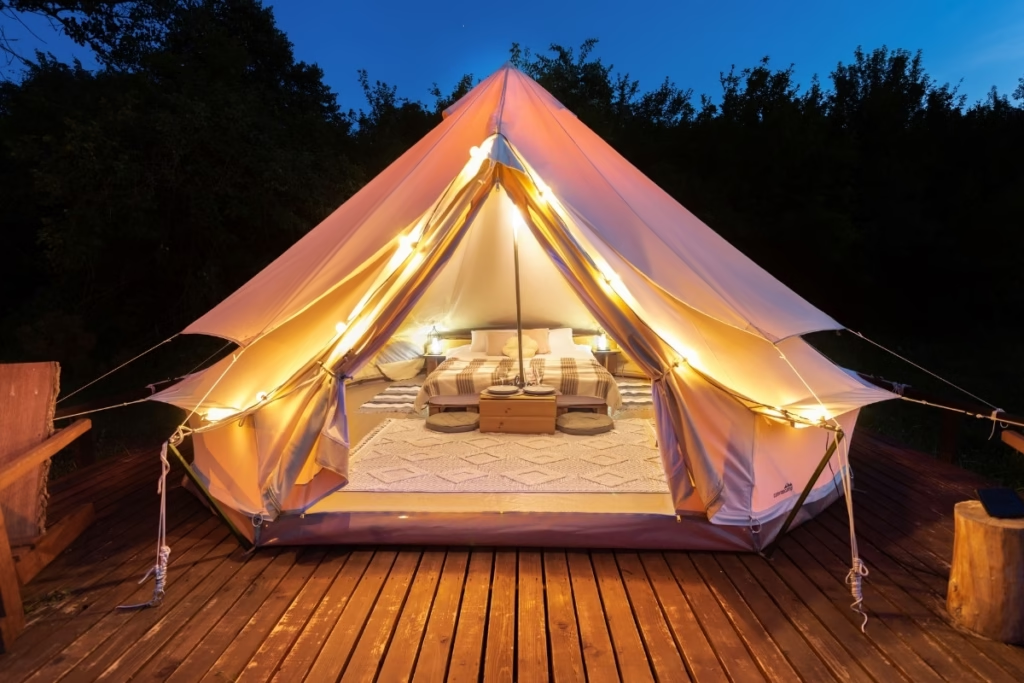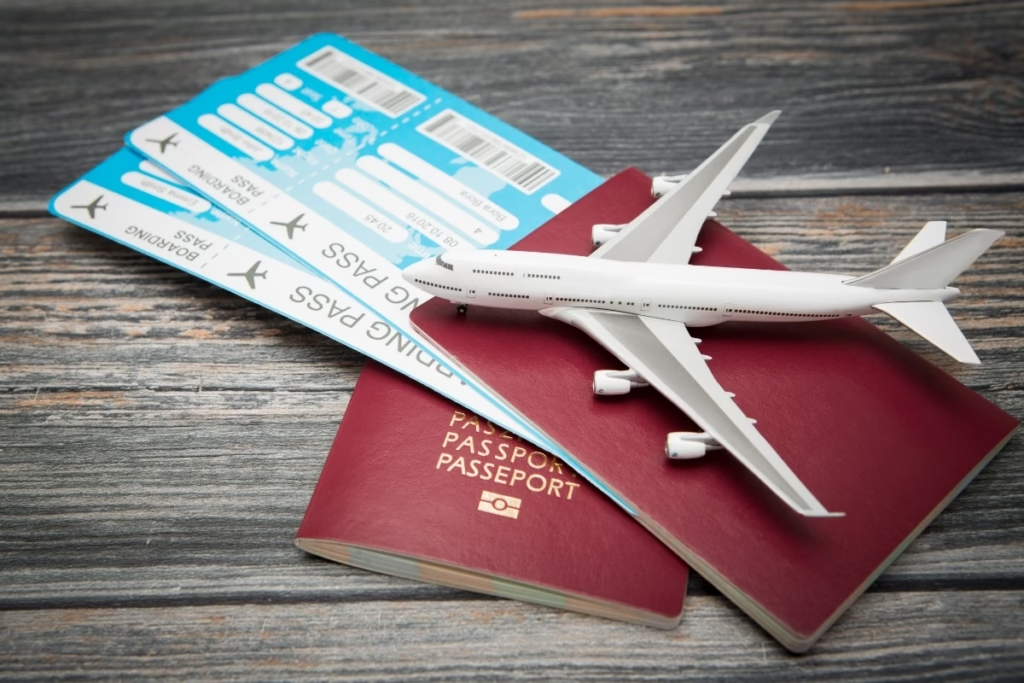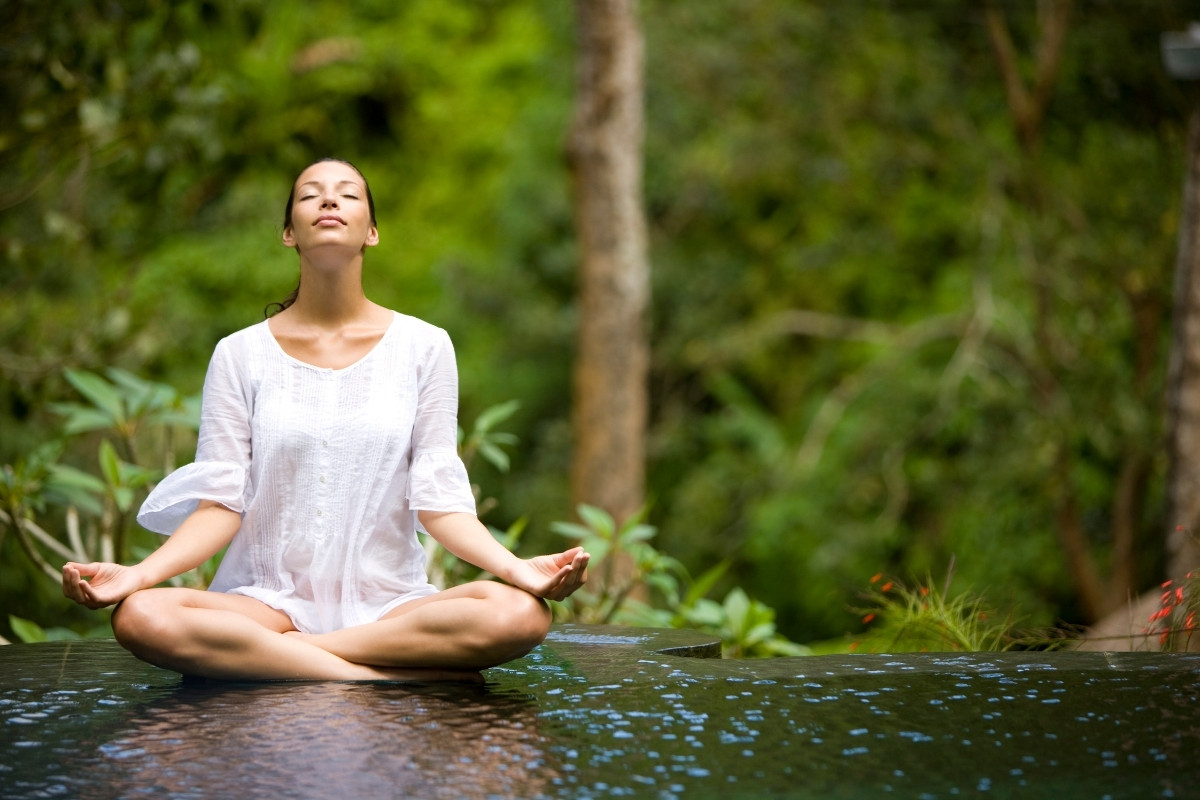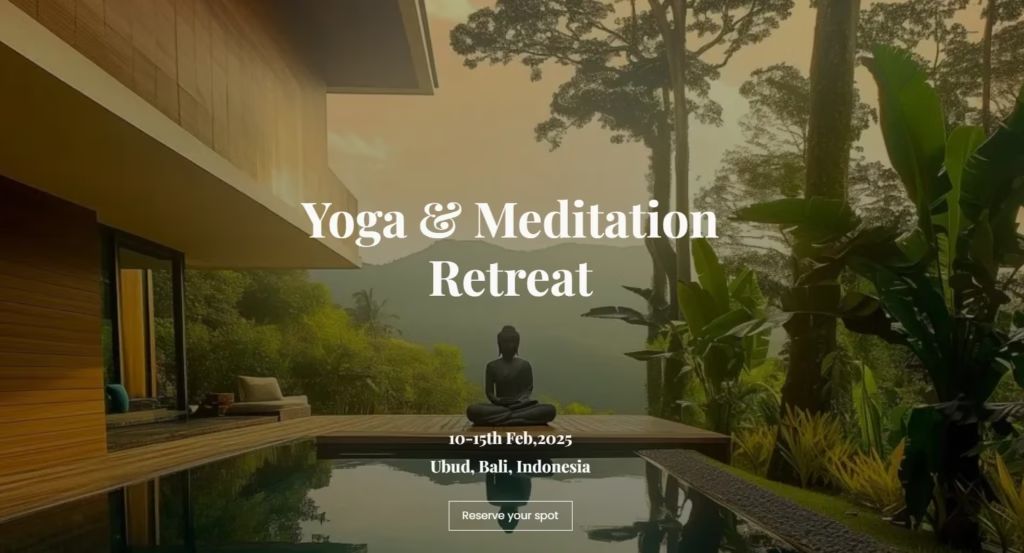Planning to take your yoga retreat overseas?
It’s an exciting step—and a powerful way to offer your students something truly transformative. Stepping outside their everyday environment helps participants disconnect from routine and reconnect with themselves through mindful movement, reflection, and adventure.
And if you’re reading this, chances are you’ve felt the pull to lead something meaningful. You have a vision—a retreat that helps others reset, grow, and return home changed.
But let’s be honest: planning an international retreat isn’t all sunset meditations and welcome circles.
Between managing time zones, currencies, venue contracts, guest logistics, and cultural nuances, it can start to feel like a full-time job.
That said, you don’t have to navigate it all on your own.
This guide will walk you through everything you need to know to make your overseas yoga retreat a smooth, successful, and soul-nourishing experience—for both you and your students. Let’s bring that vision to life, step by step.

1. Defining the Purpose and Objectives
Understanding the Goals
The first step in planning an international yoga retreat is to define its purpose and objectives clearly.
Are you aiming to strengthen team bonds, enhance creativity, or provide a space for relaxation and reflection?
Understanding your goals will help you make informed decisions throughout the planning process.
For example, if the goal is to enhance team collaboration, the retreat might focus on group activities and workshops that promote teamwork.
If the aim is to foster creativity, the agenda could include brainstorming sessions, creative workshops, and activities that inspire out-of-the-box thinking. Clearly defining these goals will help you tailor the retreat to meet specific needs.
Setting Measurable Outcomes
Establish measurable outcomes to gauge the retreat’s success. These could include improved team cohesion, enhanced problem-solving skills, or increased employee satisfaction. Having clear metrics will guide your planning and help you assess the retreat’s effectiveness post-event.
Measurable outcomes could include pre- and post-retreat surveys to measure changes in team dynamics, productivity metrics, or specific business goals such as the completion of a project.
For instance, you might use pre- and post-retreat surveys to measure changes in participants’ yoga proficiency or collect feedback on specific sessions to determine their impact.
2. Selecting the Locations

Criteria for Location Selection
Choosing the right locations is crucial for a multi-location retreat. Consider factors such as accessibility, amenities, and the overall atmosphere. Accessibility is key to ensuring participants can easily travel between locations.
Amenities like yoga studios, wellness centers, and comfortable accommodations will support both the practice and leisure aspects of the retreat.
For example, if the retreat aims to provide relaxation and de-stressing opportunities, locations with natural surroundings, spas, or wellness centers would be ideal. On the other hand, for a retreat focused on innovation and creativity, an urban setting with access to cultural landmarks and creative spaces might be more suitable.
If you’re planning a high-end event, make sure you also consider our tips on planning luxury yoga retreats.
Balancing Diversity and Cohesion
While it’s essential to offer diverse experiences, ensure the locations complement each other and contribute to the retreat’s overarching theme. For instance, a combination of a serene beach resort and a bustling city center can provide a balanced mix of relaxation and stimulation.
The variety can cater to different preferences and keep the retreat engaging, but the activities at each location should tie back to the retreat’s main objectives, maintaining a cohesive experience.
3. Crafting the Itinerary
Structuring the Schedule
Design a well-structured itinerary that balances work and leisure. Include time for workshops, team-building activities, and personal relaxation. Ensure there is a logical flow between locations to avoid unnecessary travel fatigue. For example, start with a location that offers relaxation to help participants unwind before moving to a more dynamic setting where intensive yoga sessions and workshops can take place.
Consider starting the day with energizing yoga sessions like Vinyasa or Ashtanga, followed by focused workshops or individual practice time in the morning. Afternoons can be reserved for restorative yoga, meditation, or leisure activities, and evenings for relaxation and socializing.
Incorporating Local Experiences
Leverage the unique attributes of each location by incorporating local experiences. Whether it’s a culinary tour, cultural immersion, or outdoor adventure, these activities can enrich the retreat experience and provide valuable learning opportunities.
Engaging with the local culture can also help participants feel more connected to the places they visit, enhancing the overall experience. For example, a yoga retreat in Singapore might include a visit to local temples or a traditional tea ceremony.
4. Managing Logistics

Transportation and Accommodation
Coordinate transportation and accommodation meticulously. Ensure seamless transitions between locations with well-planned travel arrangements. Choose accommodations that offer comfort, convenience, and appropriate facilities for your retreat activities. Consider options like chartered buses or group flights to keep the group together and simplify logistics.
When selecting accommodations, look for venues that can provide meeting spaces, reliable Wi-Fi, and comfortable common areas for informal gatherings.
Booking accommodations in advance and confirming all details will help avoid last-minute issues.
Catering and Dietary Needs
Plan the catering carefully, considering dietary preferences and restrictions. To be able to do this, make sure you are able to capture each participant’s infomration through a comprehensive retreat booking form.
Offer a variety of meal options and ensure that food and beverages are readily available throughout the retreat. Collaborate with local vendors to provide fresh and authentic cuisine. This not only ensures that everyone is well-fed and happy but also adds an element of local flavor to the retreat experience.
In addition to regular meals, provide snacks and refreshments during breaks to keep participants energized. Having a mix of healthy options and indulgent treats can cater to diverse tastes and preferences.
Meals that nourish and elevate the retreat.
From gluten-free to plant-based, our guide helps you craft menus as intentional as your classes.

5. Facilitating Engagement and Interaction
Ice-Breaker Activities
Start the retreat with ice-breaker activities to foster a sense of community. These can range from simple introductions to more elaborate team-building exercises. The goal is to create a comfortable and inclusive environment from the outset. Ice-breakers help participants get to know each other and set a positive tone for the retreat.
Consider activities that encourage collaboration and communication, such as group challenges, creative projects, or interactive games. These activities can help break down barriers and build trust among participants.
Interactive Workshops
Design interactive workshops that align with the retreat’s objectives. Incorporate elements of experiential learning, group discussions, and hands-on activities. Engaging participants actively will enhance their learning and retention.
Consider bringing in expert facilitators or speakers to add value and provide new perspectives.
Workshops can be tailored to address specific goals, such as leadership development, innovation, or conflict resolution. Encourage participants to share their experiences and insights, fostering a collaborative learning environment.
6. Ensuring Effective Communication

Pre-Retreat Briefings
Conduct pre-retreat briefings to set expectations and provide essential information. These briefings can be in the form of emails, video calls, or detailed itineraries. Clear communication will help participants prepare adequately and arrive with the right mindset. Include details about the schedule, what to pack, and any preparatory work required.
Providing a comprehensive retreat guide can help participants feel more confident and excited about the upcoming experience. This guide can include travel instructions, contact information for organizers, and a detailed agenda.
Real-Time Updates
Utilize technology to provide real-time updates during the retreat. Create a dedicated communication channel, such as a group chat or mobile app, to share important announcements, schedule changes, and other relevant information.
This ensures everyone stays informed and can adapt quickly to any changes.
Having a central communication hub allows for quick dissemination of information and helps address any issues that arise promptly. It also provides a platform for participants to ask questions and share their thoughts.
7. Handling Challenges and Contingencies
Anticipating Potential Issues
Identify potential challenges and develop contingency plans. These could include weather disruptions, transportation delays, or health emergencies. Having a proactive approach will enable you to address issues promptly and minimize their impact on the retreat.
For example, have a backup indoor venue for outdoor activities in case of bad weather.
Consider creating a risk management plan that outlines potential scenarios and responses. Assign roles and responsibilities to team members to ensure a coordinated approach to handling any issues.
Maintaining Flexibility
While a well-structured plan is essential, maintaining flexibility is equally important.
Be prepared to adapt and make on-the-spot decisions to ensure the retreat remains smooth and enjoyable for all participants. Flexibility can mean adjusting the schedule to better meet the group’s needs or adding spontaneous activities that enhance the retreat experience.
Encourage participants to provide feedback throughout the retreat, and be open to making changes based on their input. This adaptability can help create a more personalized and satisfying experience for everyone involved.
8. Post-Retreat Evaluation and Feedback

Gathering Participant Feedback
Solicit feedback from participants to gauge their experience and gather insights for future retreats. Use surveys, focus groups, or one-on-one interviews to collect comprehensive and honest responses. Feedback should cover various aspects of the retreat, including the locations, activities, logistics, and overall satisfaction.
Design feedback forms to be easy and quick to complete, encouraging honest and constructive responses. Consider asking participants to rate different elements of the retreat and provide open-ended comments.
Analyzing Outcomes
Analyze the feedback and compare it against the retreat’s objectives and measurable outcomes.
Identify areas of success and opportunities for improvement. This evaluation will inform your planning process for future multi-location retreats. Look for trends in the feedback to understand what worked well and what could be enhanced.
In addition to participant feedback, consider collecting data on objective measures such as attendance rates, engagement levels during activities, and any observed changes in team dynamics.
Celebrating Successes
Acknowledge and celebrate the successes of the retreat.
Share positive outcomes and testimonials with participants and stakeholders. Recognizing achievements will reinforce the value of the retreat and motivate participants for future engagements. Consider creating a summary report or video highlight reel to commemorate the experience.
Highlighting success stories and sharing them through internal communications or social media can help build a sense of accomplishment and community among participants. It also serves as a valuable promotion for future retreats.
Don’t Forget Your Digital Home: Create a Website That Works for You
When you’re planning a retreat overseas, there’s a lot to coordinate—accommodation, meals, schedules, transportation. But one thing that often gets overlooked? Your website.
Your retreat website isn’t just a place to list details. It’s your digital home—the place where potential guests get a feel for the experience, learn what’s included, and most importantly, decide to sign up.
A well-crafted site builds trust, answers key questions, and makes booking smooth and stress-free.
If tech isn’t your thing (or you just don’t have time to DIY from scratch), TheFlowOps is here to help.
Built specifically for yoga teachers and retreat hosts, TheFlowOps is a no-code website builder designed to make your life easier—especially when you’re managing a retreat abroad. With templates created for wellness entrepreneurs, built-in scheduling, and secure checkout features, you can go from idea to live website in under 30 minutes.
With TheFlowOps, you can:
- Share your retreat details in a clear, beautiful format
- Accept bookings and payments online—no back-and-forth emails
- Automate confirmations and follow-ups
- Customize your branding and domain
- Start free for 7 days with no credit card needed
Ready to Create Your Yoga Website?
Choose from templates made for yoga teachers and launch with tools for scheduling, bookings, and more. Start with a premium trial — and continue on the free plan for as long as you need.
No credit card needed. Cancel anytime.

Conclusion
Planning and coordinating multi-location yoga retreats is a multifaceted endeavor that requires careful consideration and meticulous execution.
By defining clear objectives, selecting appropriate locations, crafting a balanced itinerary, managing logistics efficiently, facilitating engagement, ensuring effective communication, handling challenges proactively, and evaluating outcomes thoroughly, you can create a memorable and impactful retreat experience.
Embrace the complexity, and with thoughtful planning, your multi-location yoga retreat will be a resounding success.
Whether you’re organizing a yoga retreat in Singapore or exploring retreat venues around the world, this guide provides the foundation you need to create an enriching and transformative experience for your participants.
Get everything you need to plan and promote your retreat! Download the Retreat Planning Guide Template and launch your site with TheFlowOps Web Builder today.




